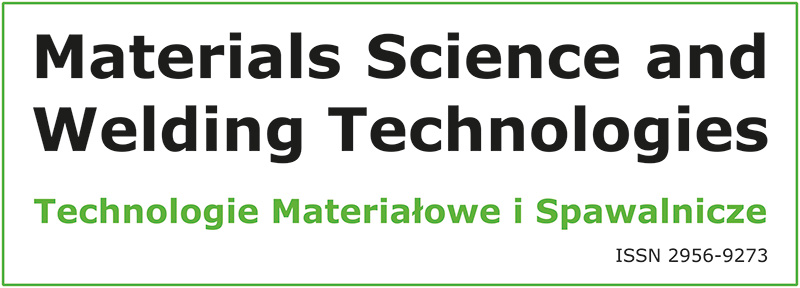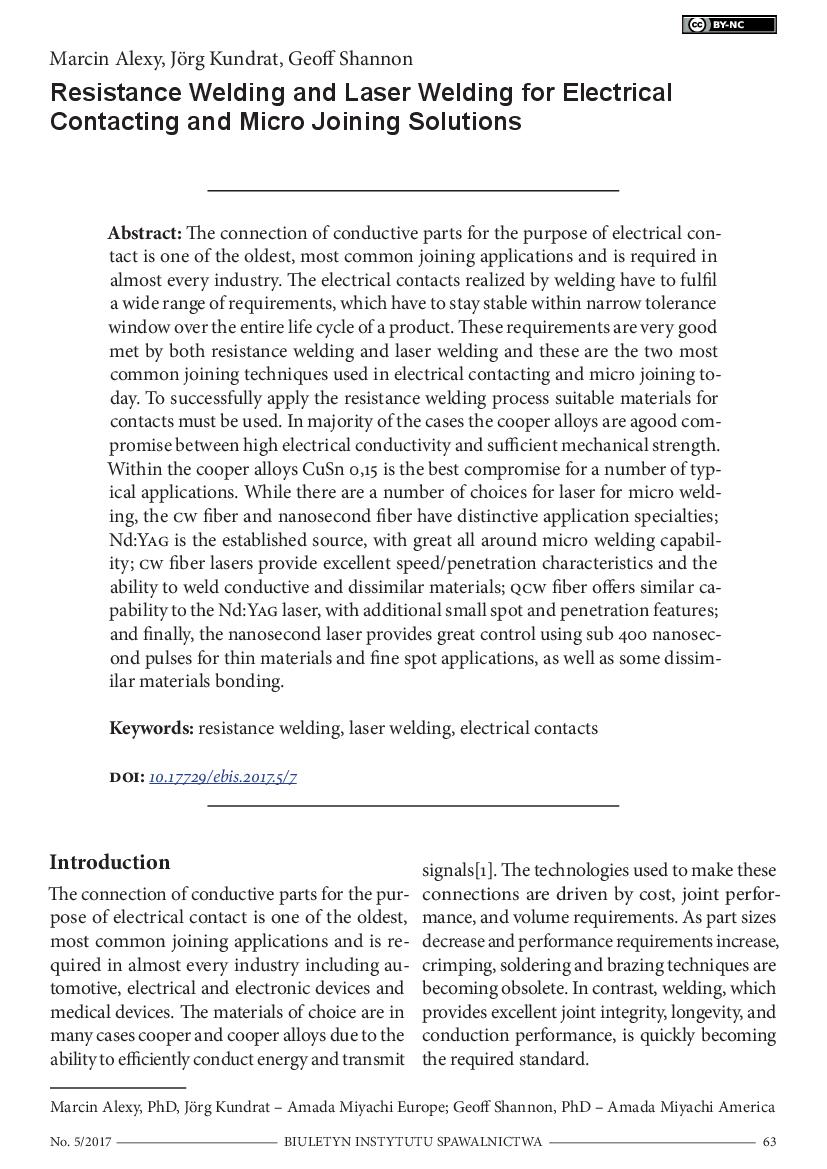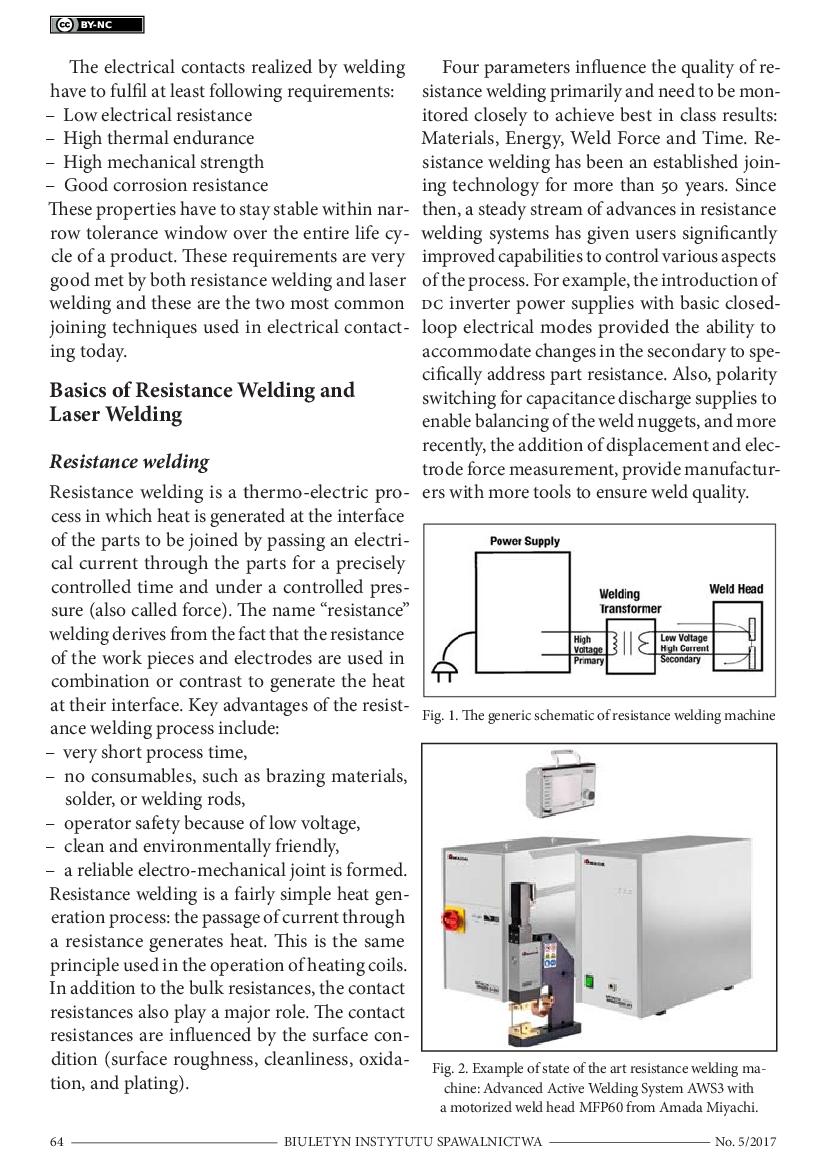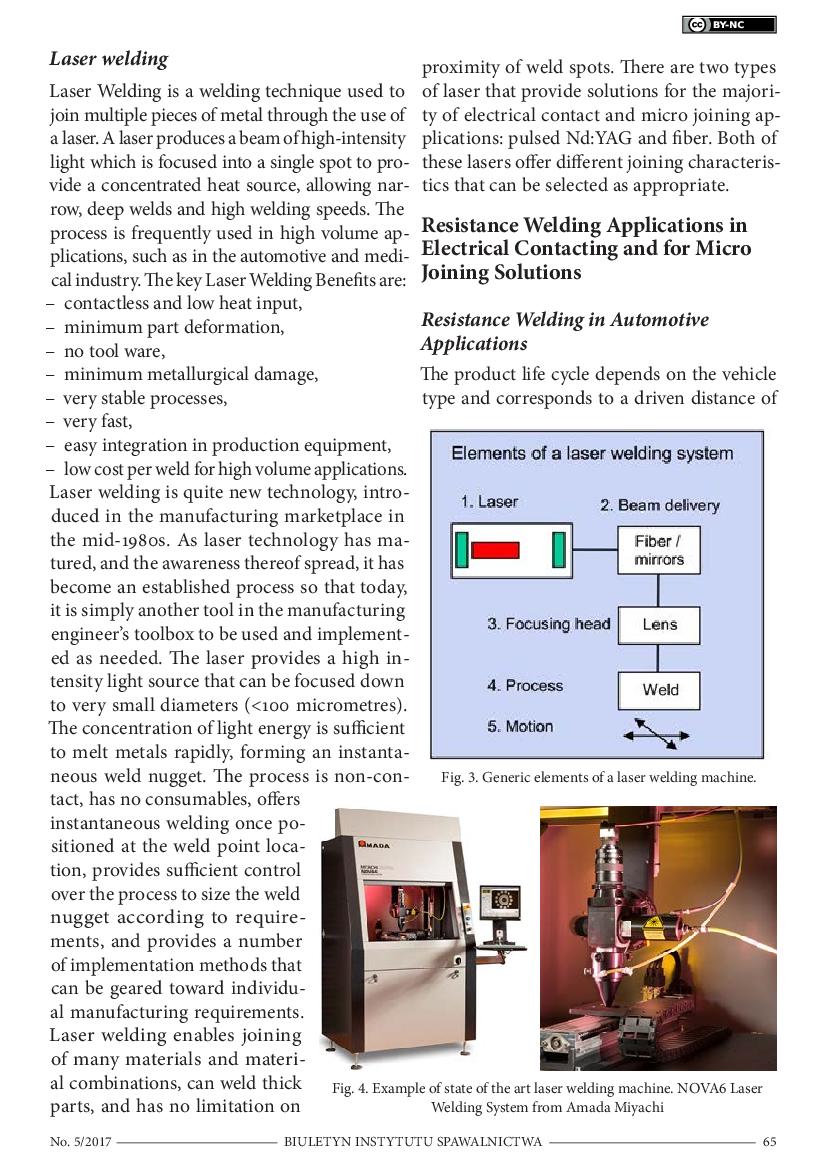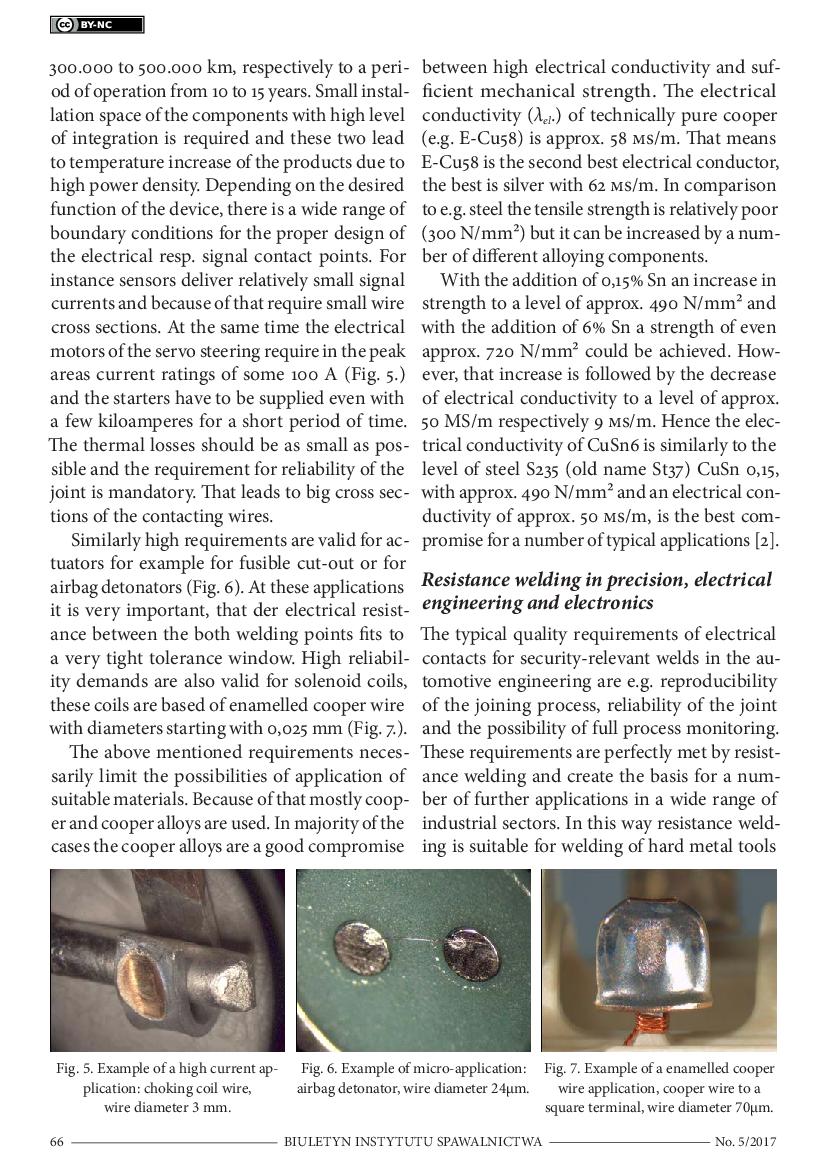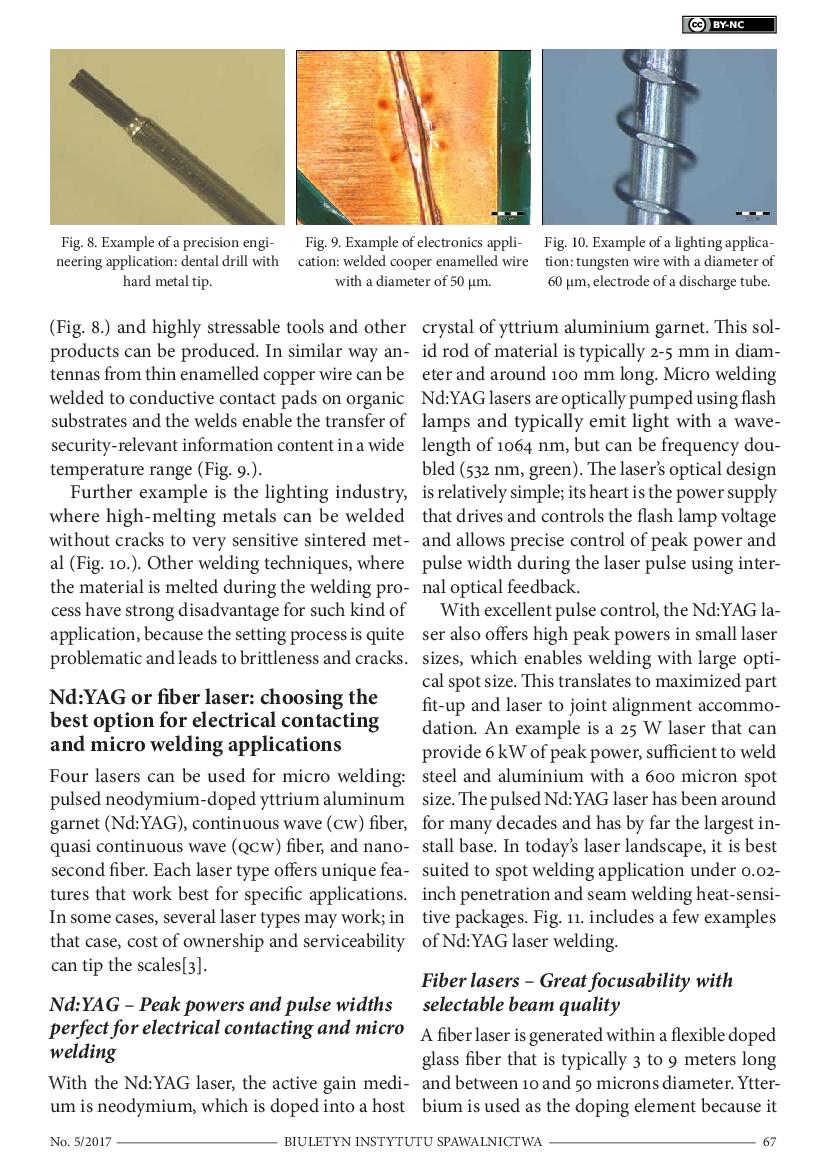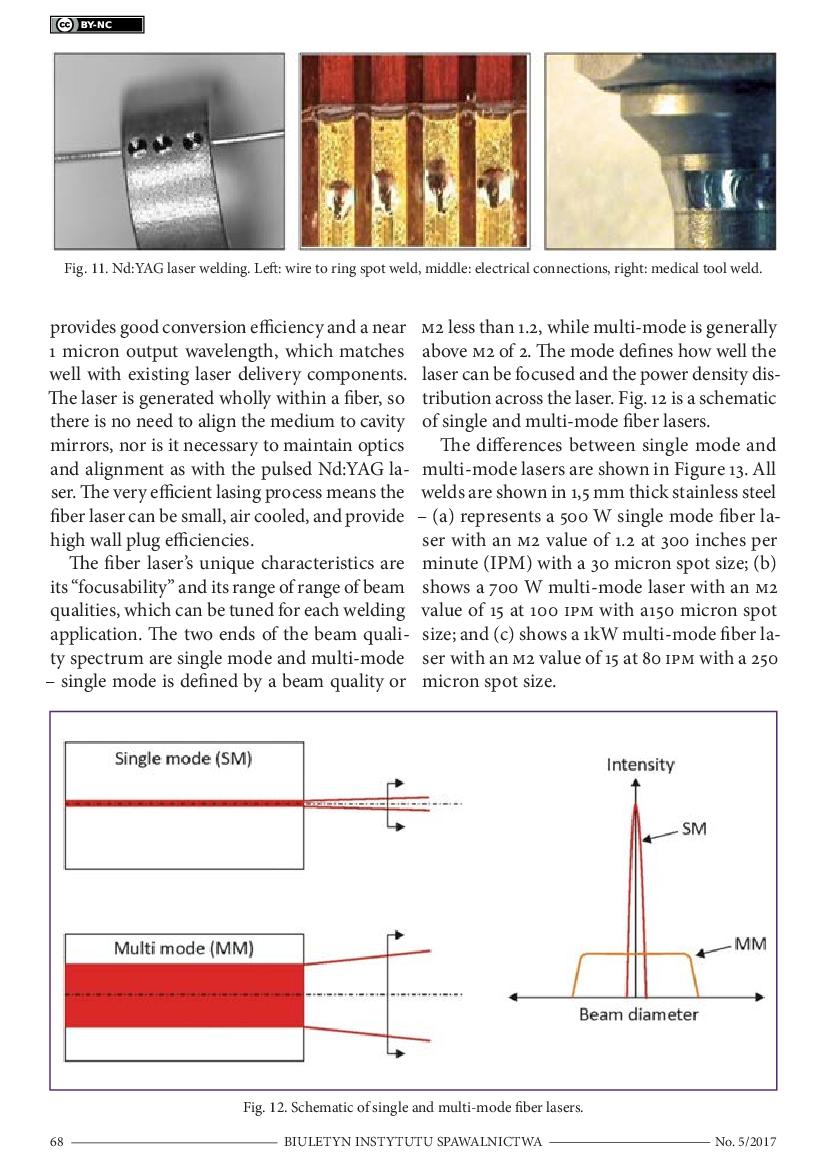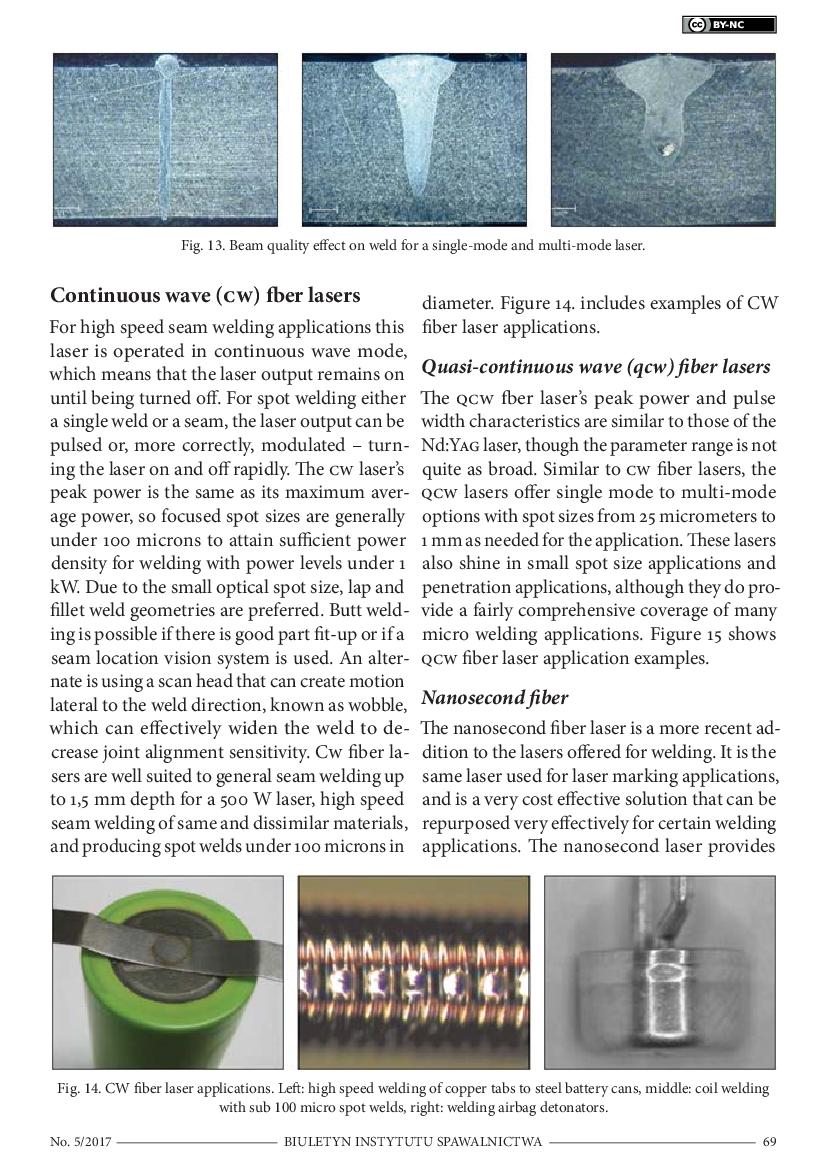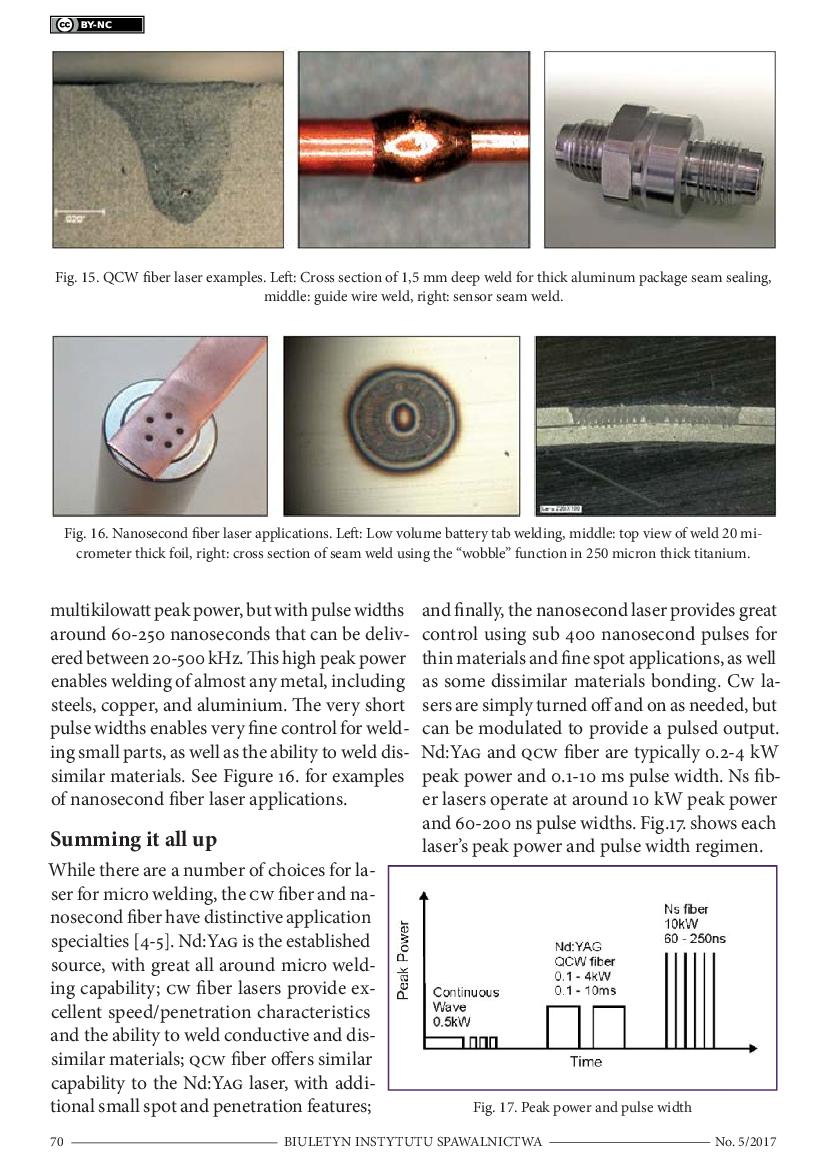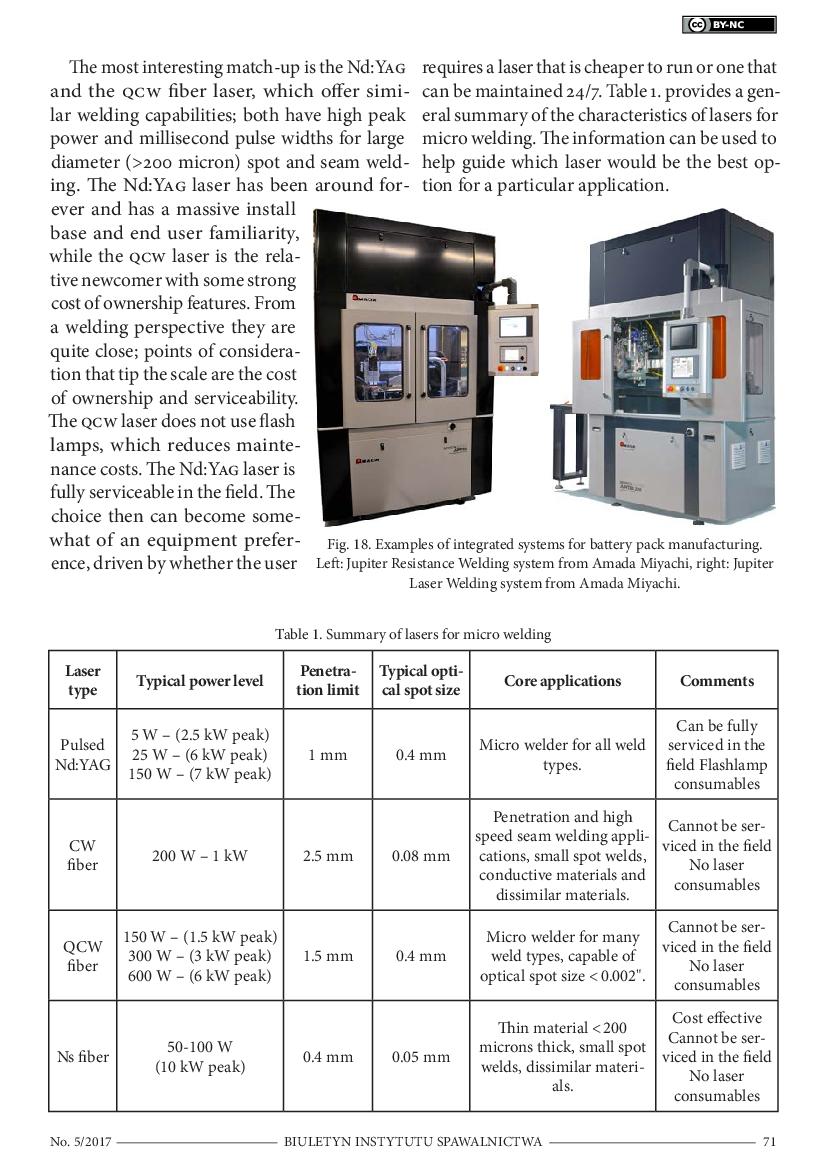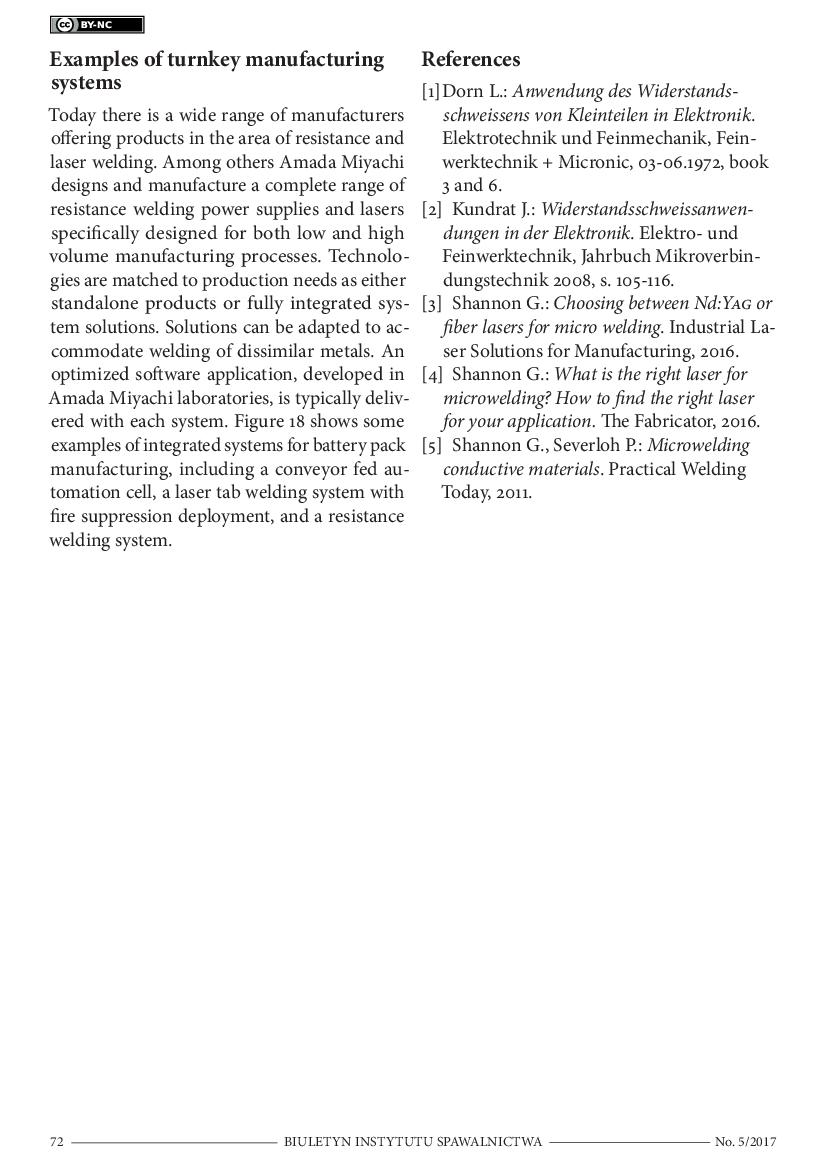Resistance Welding and Laser Welding for Electrical Contacting and Micro Joining Solutions
The connection of conductive parts for the purpose of electrical contact is one of the oldest, most common joining applications and is required in almost every industry. The electrical contacts realized by welding have to fulfil a wide range of requirements, which have to stay stable within narrow tolerance window over the entire life cycle of a product. These requirements are very good met by both resistance welding and laser welding and these are the two most common joining techniques used in electrical contacting and micro joining today. To successfully apply the resistance welding process suitable materials for contacts must be used. In majority of the cases the cooper alloys are a good compromise between high electrical conductivity and sufficient mechanical strength. Within the cooper alloys CuSn 0,15 is the best compromise for a number of typical applications. While there are a number of choices for laser for micro welding, the CW fiber and nanosecond fiber have distinctive application specialties; Nd:YAG is the established source, with great all around micro welding capability; CW fiber lasers provide excellent speed/penetration characteristics and the ability to weld conductive and dissimilar materials; QCW fiber offers similar capability to the Nd:YAG laser, with additional small spot and penetration features; and finally, the nanosecond laser provides great control using sub 400 nanosecond pulses for thin materials and fine spot applications, as well as some dissimilar materials bonding.
 1 / 10
1 / 10
 2 & 3 / 10
2 & 3 / 10
 4 & 5 / 10
4 & 5 / 10
 6 & 7 / 10
6 & 7 / 10
 8 & 9 / 10
8 & 9 / 10 10 / 10
10 / 10
